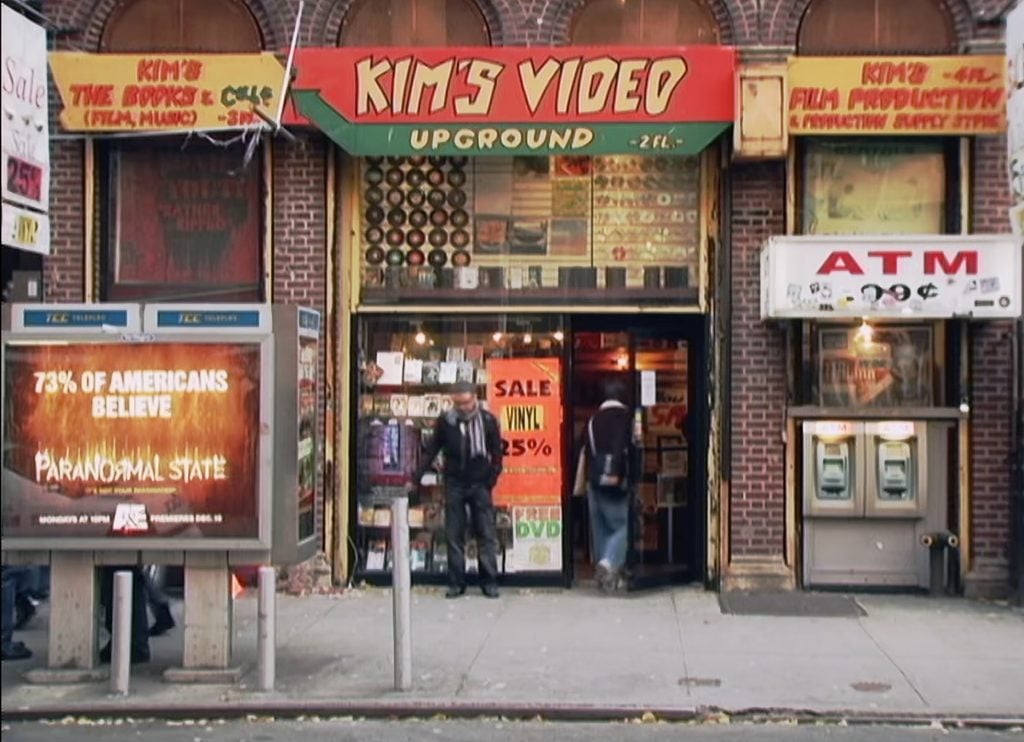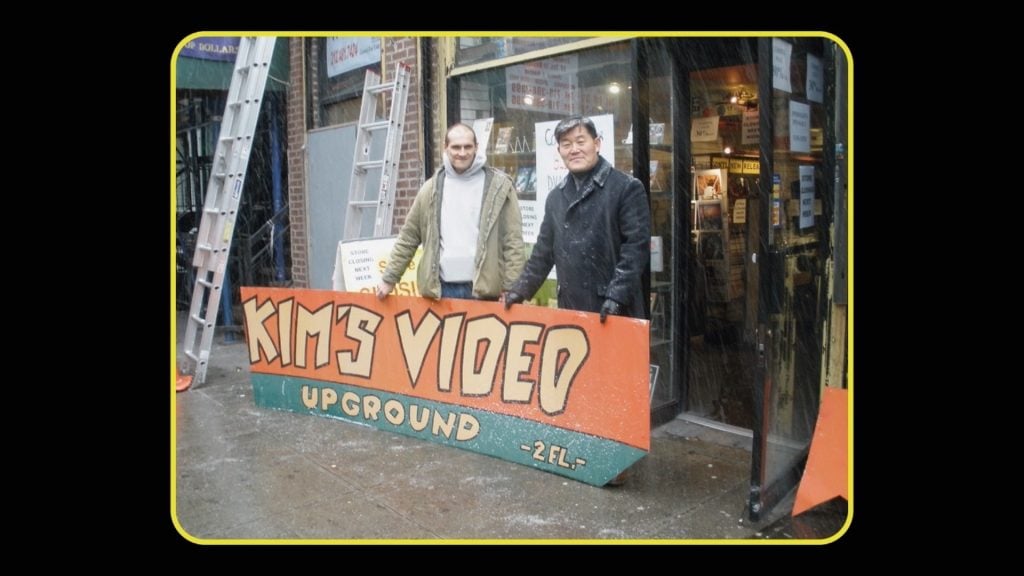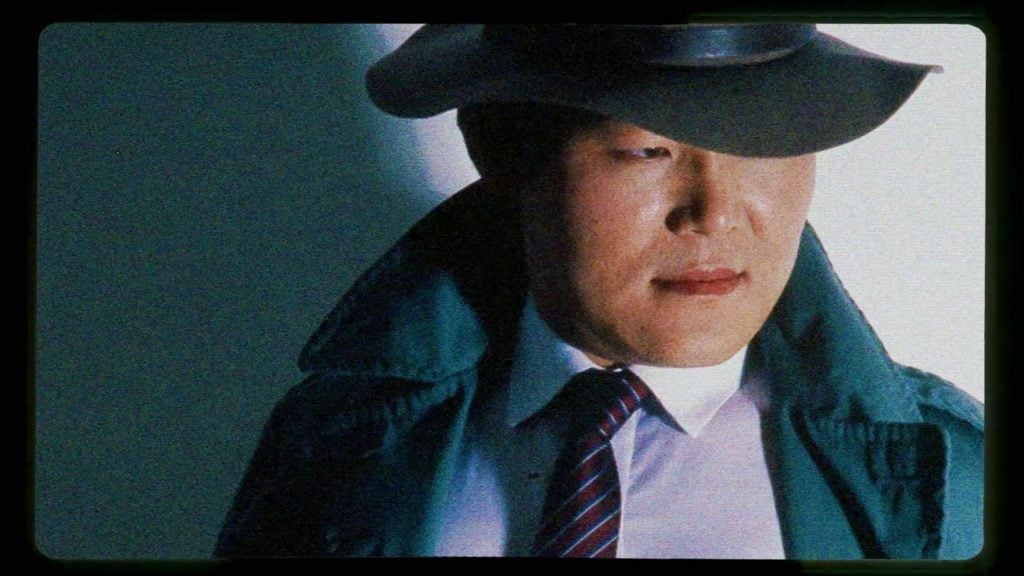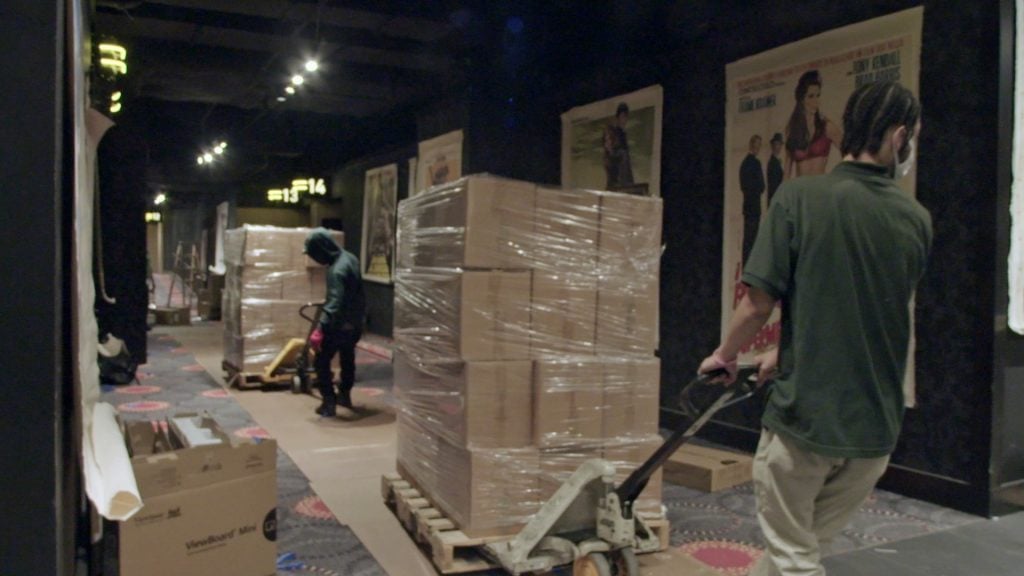Pop Culture
A New Documentary Delves Into the Bizarre Fate of a Historic Video Collection
What did Vittorio Sgarbi want with 55,000 VHS tapes from a defunct Kim's Video store?

In 2008, David Redmon and Ashley Sabin learned that Kim’s Video and Music was shutting down. The beloved retail store in the East Village in New York had been in business for more than two decades, becoming a haven for lovers of the underground arts. Its shelves were stacked with art-house films, B movies, and obscure titles—from Stranger Than Paradise to Smithereens, from Warhol to Godard—that had drawn the likes of the Coen brothers (who racked up some $600 in late fees).
Kim’s closure, Redmon told me over a Zoom call, “shocked” the couple. But more surprising news came next: the store’s historic video collection, numbering about 55,000 tapes and DVDs, had been sold and was bound for Salemi, a small town in Sicily, Italy.
What was this sleepy village? Did it harbor art-house pretensions? Were its residents secret film buffs? Duly intrigued, Redmon and Sabin—whose shared filmography includes Invisible Girlfriend and the much-feted Mardi Gras: Made in China—set out to find out. The upshot is Kim’s Video, a documentary that traces their journey to locate Kim’s trove—and bring it back.

Youngman Kim on closing day of Kim’s Video. Photo courtesy of Drafthouse Films.
The film kicks into gear with Redmon’s first trip to Salemi, to which he is lured by the promise that the Kim’s Video collection would be available to all ex-members. What he finds instead is a large, closed room with haphazardly organized piles of tapes, left exposed to moisture and neglected amid debris. “It just didn’t seem fair to see a collection that was so alive and so giving to be shut in the dark,” he recalled.
Just as unsettling was learning that the collection had been acquired by Salemi as part of a village restoration project. The effort was spearheaded by the town’s then-mayor and Italy’s undersecretary for culture, Vittorio Sgarbi. Kim’s tapes were meant to transform Salemi into a cultural hub, but also represented a pawn or form of leverage as Sgarbi, also an art critic and curator, eyed a meatier role in national politics.
Redmon doggedly trails Sgarbi for a good portion of the documentary, trying and failing to learn his intentions for the collection. More fruitful is his unearthing of a number of unsavory elements in Sgarbi’s administration in Salemi. (Sgarbi resigned from Italy’s culture ministry in early 2024 over allegations that he laundered stolen art.) “He loves his little posse, loves the attention given to him and thrives on it,” Redmon said of Sgarbi. “But anytime he saw me, it was a glance of: ‘Here’s this guy again. What does he want with Kim’s Video?'”

Yongman Kim. Photo courtesy of Drafthouse Films.
All of which only fuels Redmon’s conviction that the video trove does not belong in Salemi, but back in New York. Even Yongman Kim, founder of the video store, lamented in the movie: “They don’t realize what they have. It’s sad but it’s beyond my authority.”
Not for Redmon, who decides the only way to reclaim the collection is to steal it. For inspiration, he watches Bicycle Thieves and Ulay’s 1976 performance art piece There Is a Criminal Touch to Art; he takes notes from Argo. The heist itself, the film’s centerpiece, is a breathtaking thing to watch, but Redmon assured me it was thoroughly researched behind the scenes to ensure no country’s laws were broken.
“I have a Kim’s Video membership card and the condition here is that former members are allowed to rent movies,” he said, referencing the agreement between Salemi and Kim. “So, I’m going to rent 55,000 movies. Let’s take them away.”

The Kim’s Video collection arriving at Alamo Drafthouse. Photo courtesy of Drafthouse Films.
Today, Kim’s Video is back in business in the U.S., after the filmmakers reached out to about 50 institutions to find it a home. Since 2022, it’s been operating under the auspices of Alamo Drafthouse in Lower Manhattan, where around 15,000 videos (and accompanying VCRs) can be checked out for free. For Redmon and Sabin, it marked the end of a six-year-long endeavor to return the collection. For Kim, it resolved a decades-old miscalculation on his part.
Redmon recalled screening the documentary for Kim early on, only to be told by the founder: “It doesn’t depict me honestly. You need more criticism of what I’ve done.” To the director, it left the door open for an unvarnished view of his decision to let the collection go. “We had the understanding that it’s okay to say it the way it is,” said Redmon, “that he pulled the rug out and sent the collection away against many people’s wishes.”
On paper, Redmon believes, the video hoard still technically belongs to Salemi, which has loaned it to Kim, who in turn has inked an agreement with Alamo Drafthouse. “It’s a complicated contract, let’s put it that way,” he said. But, amid that tangle of stewards, Kim’s Video dares to posit that perhaps no one person gets to hold all of it. The directors may have reclaimed it, but only to set it free: “The motivation to secure the collection is to preserve it, enhance it, and make it available so people can have access to it and learn from it,” Redmon said.
“I would like to think everyone owns that collection,” he added. “It’s a kind of ownership where no one possesses, but everyone shares.”
Kim’s Video opens theatrically in New York and Los Angeles on April 5, before expanding throughout the U.S. and Canada from April 12.





